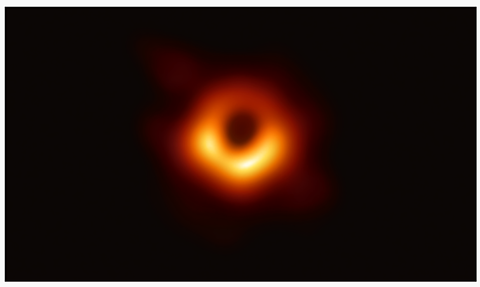Q&A with Lia Medeiros

Lia Medeiros, a Member and astrophysics postdoctoral fellow in the School of Natural Sciences, is interested in using astronomical objects and phenomena to test fundamental theories of physics. She is a winner of the 2020 Breakthrough Prize in Fundamental Physics and a member of the Event Horizon Telescope Collaboration, which produced the first image of a supermassive black hole in April 2019.
What drew you to this field initially?
It became clear to me that this would be the best place for me to grow as a scientist while also providing a community and space that I enjoy.
Having grown up in three different countries I was drawn to the universality of mathematics from an early age. In high school, my love for mathematics evolved into a love for physics and astronomy when I learned how fast speeds or strong gravitational fields could dilate time. I was especially fascinated by black holes and decided to devote my career to better understanding these fascinating objects.
Why IAS?
I was originally drawn to the IAS due to the breadth of the work being conducted at the Institute and because of the amazing history of the Institute. After visiting the campus earlier this year it became clear to me that this would be the best place for me to grow as a scientist while also providing a community and space that I enjoy.
What question within your field do you most want to answer and why?
Currently my focus is on the Event Horizon Telescope (EHT); I'm trying to determine whether black holes in space behave the way we expect based on our current understanding of gravity. In general I am interested in using astronomical objects and phenomena to learn more about gravity.
Where is your favorite place to think?
I enjoy hanging out at coffee shops with a cup of hot chocolate.
What do you hope the impact of your research will be now or in the future?
I hope that results such as the recent EHT image of M87 and the many gravitational wave detections by the LIGO/VIRGO collaboration are just the beginning, and that we will continue to use astronomical black holes to test fundamental physics.
How do you describe your work to friends and family?

I frequently try to describe what the recent EHT image of the black hole in the center of M87 actually shows. The main idea I try to explain is that the dark region in the center of the image is what we like to call the black hole shadow, or the shadow that the black hole casts on the surrounding emission. The black hole shadow that is seen in the image is significantly larger than the size that the event horizon would have if it were observable.
What other activities or subject areas do you enjoy?
My current interests include aerial silks, ceramics, and salsa dancing. I also enjoy doing outreach and will be running an afterschool program for middle school students during my time at the IAS.


